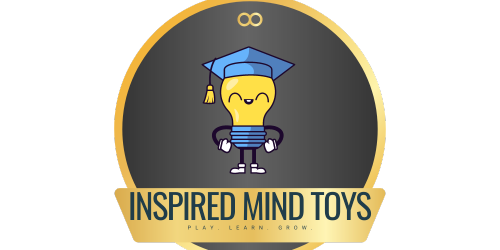Are you wondering how to foster creativity in your children? Look no further! In this article, we will explore various methods to inspire and encourage creativity in children. Whether you are a parent, educator, or simply someone interested in stimulating the artistic and imaginative minds of young ones, these tips and insights will provide you with valuable tools to support their creative growth. From engaging in open-ended play to exposing them to different forms of art and music, there are countless ways to nurture their creative spirits. Join us as we unlock the secrets to encouraging creativity in children, and watch their imaginations soar to new heights.
The Importance of Fostering Creativity in Children
Creativity is an essential aspect of a child’s development, contributing to their overall well-being and success in various areas of life. When children engage in creative activities, they not only enhance their cognitive skills but also develop emotional intelligence and problem-solving abilities. Understanding the connection between creativity and brain development is crucial in nurturing children’s potential to think outside the box and explore new possibilities.
Research has shown that promoting creativity in childhood has a significant impact on a child’s future success in adulthood. Children who are encouraged to think creatively tend to become more adaptable and resourceful individuals. They develop stronger critical thinking skills, which enable them to approach challenges with innovative solutions. By fostering creativity from an early age, we are empowering children to become lifelong learners and embrace a growth mindset.
One of the vital roles of creativity in children is its ability to develop critical thinking and problem-solving skills. When children engage in creative activities, such as art, music, or imaginative play, they learn to think critically, analyze situations, and come up with unique solutions. This enhances their ability to tackle complex problems in their academic and personal lives. By nurturing their creative thinking skills, we are equipping children with valuable tools for success in the future.
Reducing Screen Time
Excessive screen time has become a growing concern in today’s digital age, impacting children’s creativity and overall development. Excessive exposure to screens, such as televisions, smartphones, and tablets, can hinder a child’s creativity, as it limits their opportunities for imaginative play and exploration. Setting healthy screen time limits is crucial to ensure that children have ample time for creative activities that stimulate their imagination and problem-solving abilities.
To reduce screen time and foster creativity, it is important to provide alternative activities that engage children’s minds and encourage their creativity. Outdoor play, for instance, allows children to connect with nature, explore their surroundings, and engage in imaginative play. Building forts, creating artwork with natural materials, or going on a nature scavenger hunt are just a few examples of activities that can replace screen time and nurture children’s creativity.
Creating an Enabling Environment
The environment plays a crucial role in fostering creativity in children. By creating child-friendly spaces, we can cultivate an atmosphere that stimulates creative thinking and encourages exploration. When designing such spaces, it is important to consider the child’s perspective and provide them with opportunities to express themselves freely.
Decorating a creativity-friendly space involves incorporating elements that inspire and spark imagination. Use vibrant colors, stimulating artwork, and flexible furniture that allows children to move and rearrange the space according to their needs. Additionally, incorporating natural elements such as plants and natural light can enhance the ambiance and foster a sense of calmness and inspiration.
Nature itself is a powerful source of inspiration for creativity. Encouraging children to spend time outdoors, explore natural environments, and observe the beauty of the world around them can ignite their imagination and fuel their creativity. Take children on nature walks, allow them to collect interesting objects, and encourage them to create art or stories inspired by their outdoor experiences.
The Role of Art in Creativity
Art provides a multitude of opportunities for children to explore their creativity. Whether it’s drawing, painting, sculpting, or crafting, engaging in art activities allows children to express themselves, experiment with different materials, and develop their own unique artistic style.
Engaging in art stimulates the creative process by encouraging children to observe the world around them, tap into their imagination, and visualize their ideas. Art enables children to think critically, make choices, and problem-solve as they work on their creations. Through art, children learn to embrace mistakes, think flexibly, and find alternative solutions.
To support children’s artistic development, there are numerous online resources available for art education. These platforms offer step-by-step tutorials, art projects, and inspiration for children to explore different art forms and techniques. Parents and educators can utilize these resources to provide children with a well-rounded art education that nurtures their creativity.
Exploring Music and Dance
Music education has long been recognized for its positive impact on children’s creativity. Learning to play a musical instrument or engaging in singing and dancing activities allows children to express themselves creatively and develop their sense of rhythm, melody, and harmony.
Music stimulates various areas of the brain, enhancing cognitive development and providing a platform for self-expression. By exploring different musical genres and instruments, children expand their creative horizons and develop a deeper appreciation for the arts. Parents can encourage children to explore music by providing access to musical instruments, enrolling them in music lessons, or simply playing music at home.
Similarly, dance provides an avenue for children to express themselves creatively through movement. Whether it’s ballet, hip-hop, or contemporary dance, engaging in dance activities develops children’s coordination, rhythm, and self-confidence. Dance encourages children to explore different emotions and tell stories through movement, fostering their creativity and imaginative thinking.
Incorporating Storytelling and Drama
Storytelling and drama play a vital role in encouraging creativity in children. The art of storytelling allows children to immerse themselves in imaginary worlds, develop empathy for characters, and create narratives of their own. Through storytelling, children hone their language skills, expand their vocabulary, and learn to think creatively as they weave stories from their imagination.
Drama and role-play provide children with opportunities to step into different characters, think critically, and solve problems within the context of a story. By engaging in dramatic play, children enhance their social and emotional skills, develop their ability to empathize and collaborate, and boost their confidence in public speaking and presentation.
Parents and educators can foster storytelling and drama by providing children with a variety of books, storytelling props, and opportunities to engage in dramatic play. Creating a storytelling corner or organizing dramatic performances at home or in school encourages children to unleash their creativity and develop a love for storytelling and drama.
The Art Of Questioning
Encouraging curiosity and inquisitive thinking is essential in fostering children’s creativity. By teaching children to ask questions and explore different possibilities, we open doors to new ideas and innovative thinking. Encouraging a curious mindset helps children become active learners and critical thinkers.
Parents and educators can guide children in asking thoughtful questions by providing them with opportunities to explore their interests, conduct experiments, and engage in problem-solving activities. By nurturing their curiosity, children develop a hunger for knowledge and a desire to explore the world around them.
It’s important to guide children in their questioning process without imposing ideas or limiting their exploration. Allow them to explore different avenues of thought, encourage them to seek answers independently, and provide support and guidance along the way. By embracing the art of questioning, children can unlock their creative potential and develop a lifelong passion for learning.
Importance of Free Play
Unstructured play is crucial for children’s creativity and overall development. When children engage in free play, they have the freedom to explore their imaginations, create their own narratives, and problem-solve in an open-ended setting. This type of play stimulates creativity by allowing children to think outside the box and experiment with different ideas.
Balancing structured and unstructured play time is important in providing children with a well-rounded play experience. While structured activities, such as organized sports or music lessons, offer many benefits, it is equally important to leave ample time for children to engage in unstructured play. This can involve playing with open-ended toys, creating with art materials, or engaging in imaginative play with peers.
Creating safe spaces for imaginative play is essential in encouraging children’s creativity. Designate an area in the home or school where children can freely engage in imaginative play without the fear of interruptions or restrictions. Provide a variety of props, costumes, and materials that can enhance their play experience and ignite their creativity.
Encouraging Reading and Writing
Reading is a powerful tool for nurturing children’s creativity. When children engage with literature, they are exposed to different worlds, characters, and perspectives, which expand their imagination and inspire their own creative thinking. Reading enhances language skills, vocabulary, and comprehension, enabling children to express themselves creatively through writing and verbal communication.
To encourage reading, parents can create a cozy reading nook at home, filled with age-appropriate books and reading materials. Establishing a regular reading routine and setting aside dedicated time for reading allows children to develop a love for literature and make it an integral part of their daily lives.
Creative writing is another avenue for children to explore their creativity and enhance their language skills. By providing prompts, journaling opportunities, or storytelling exercises, parents and educators can encourage children to express themselves through writing. This not only nurtures their creativity but also strengthens their written communication skills.
It is important to select appropriate literature for different age groups, ensuring that the content is engaging, age-appropriate, and diverse. By exposing children to a variety of genres and authors, we broaden their horizons and provide them with a rich literary experience that fosters their creativity.
Role of Technology in Fostering Creativity
In today’s digital age, technology can be a powerful tool in fostering children’s creativity when used appropriately and in moderation. Innovative apps and digital resources can provide children with new avenues for creative expression, problem-solving, and learning.
Various apps and online platforms offer interactive art, music, and coding programs that encourage children to explore their creativity through technology. These resources provide step-by-step tutorials, creative challenges, and opportunities to experiment with different digital tools. By integrating technology, children can enhance their problem-solving abilities, develop digital skills, and create innovative projects.
However, it is crucial to strike a balance between traditional creative outlets and technology. While technology can provide valuable opportunities for creativity, it is important to ensure that children also engage in hands-on activities, such as art, music, and physical play. By incorporating a variety of creative outlets, we can provide children with a well-rounded creative experience that encompasses both traditional and digital mediums.
In conclusion, fostering creativity in children is vital for their overall development and success in various aspects of life. By understanding the connection between creativity and brain development, reducing screen time, creating an enabling environment, incorporating art, music, storytelling, and drama, encouraging curiosity and free play, and promoting reading, writing, and technology in a balanced way, we can empower children to unlock their creative potential and become innovative thinkers.







